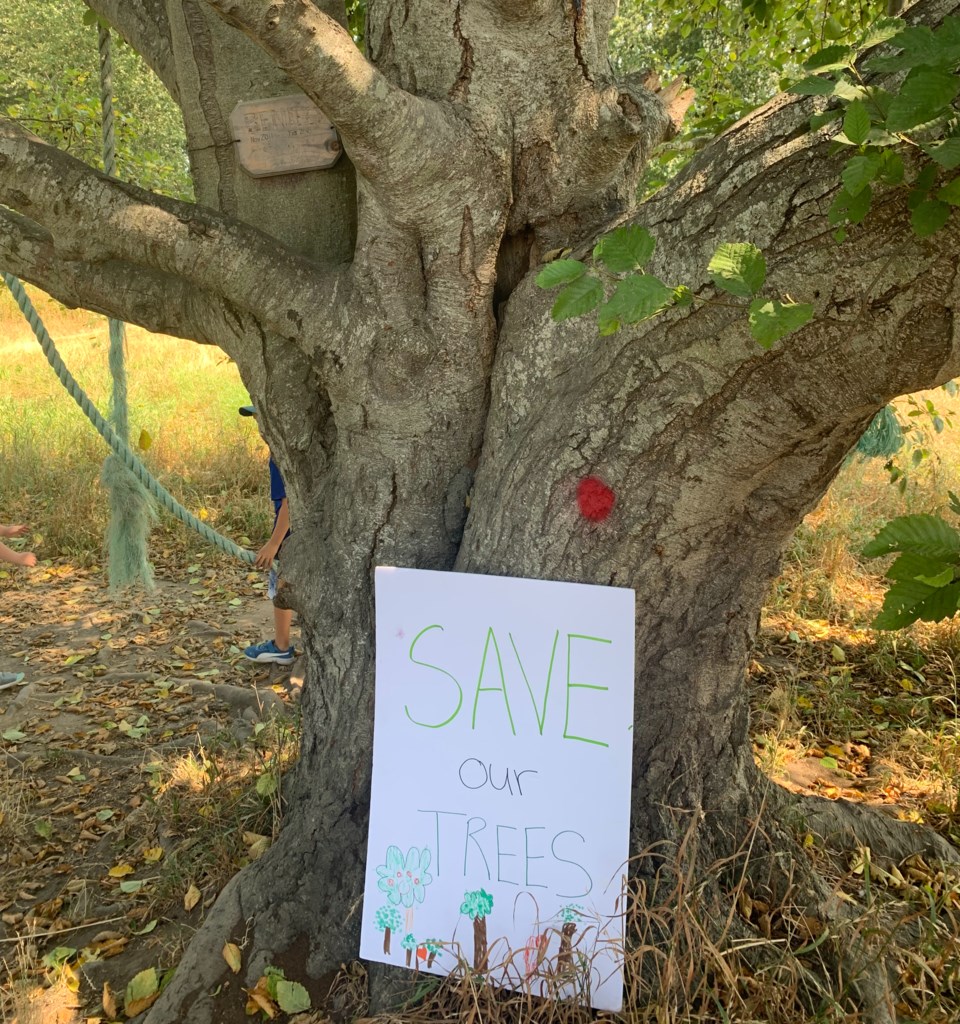The removal of trees along the South Dyke Trail in Richmond has upset some residents.
Approximately 50 trees in total, from No. 3 Road to 400 meters west of No. 4 Road, will be cut down this August to prepare for the South Dyke upgrade.
The city will also relocate another nine trees on the north side of the dog park.
"It's a massive loss, especially for kids who always go to those big trees with ropes and swing under them,” said community activist Karina Reid.
It's also devastating because these are big shade trees and their removal will leave walkers with no respite from the scorching sun as they walk along the dyke, she added.
Reid is asking the city to at least put off the tree removal project for a few months until the sun is less intense.
The trees are in the footprint of the new dyke and their removal is one of the first steps in the dyke construction project, explained city spokesperson Kim Decker.
It’s necessary, she added, because the tree roots can provide a path for water, which can erode the dyke, she added.
"Also, if trees within the footprint of the dyke lean or fall during a windstorm, they can cause major damage to the dyke," read the city statement.
Regarding the timing, "dry summer weather is the most suitable for this project which is why the removal is scheduled for mid-August. Unfortunately, this means a few weeks of less shade for our park visitors and we apologize for that," the statement continues.
The city also explained that 130 trees would be planted once the dyke upgrade is complete, including native evergreen and shade tree species.
Councillor Michael Wolfe said numerous people have written to the mayor and council expressing concern about the project, and he has stressed the need for habitat compensation with fellow councillors.
"My big concern is we shouldn't be going ahead with the new work…until we have the habitat compensation plan built in," said Wolfe.
Wolfe, who has toured along Richmond shorelines in his single-person boat craft, said it's extremely important to retain some trees and habitats which are hanging over the river during the dyke improvement process.
"These existing trees hang over the river provide shade and shelters (for creatures). Those need to be respected, marked and retained. We really need to address that to make this a priority before too much work gets started," said Wolfe.



